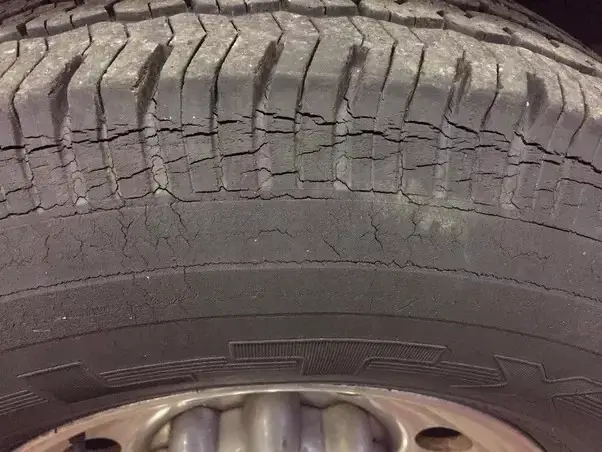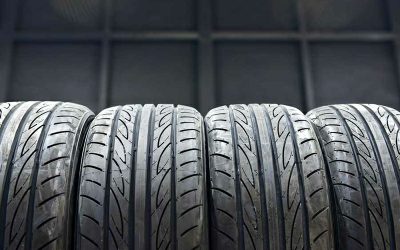Car damage causes you a lot of discomfort, especially the tires. In some cases, tire damage, such as a flat or punctured tire, is easy to deal with. You can repair it yourself with a special tool kit without going to a repair shop.
Besides, there are also tire damage problems that are very difficult to handle. You may need to replace it with a new one, which can be quite costly, including tire sidewall damage.
Sidewall tire damage causes tearing, cracking, or bulging. If it is serious, it can affect the safety of driving.
So if you encounter such a situation, what should you do? This article gives you an economical and effective way to handle that.
What is Tire Sidewall Damage?
Tires are the only part that directly interacts with the road surface. While moving, it is easy to cause damage due to abrasion and scratches. Many damaged cases need tire replacements when the time has not yet come.
Sidewall tire damage is one of the most frustrating problems. It usually manifests through the appearance of cracks, tears, leaks, or bulges on the sidewall of the tire. Another sign is the presence of bubbles or air leaks. If this problem is too serious, it will lead to complete tire failure.
A ‘bubble’ developing on the sidewall is a red flag for your tires. Think of the bubble as a ticking time bomb.
The ply straps are the belt construction of the tire that has broken down, and the inside of the tire is losing air and is waiting to inflate, which is a sign of a bubble.
It is often difficult for drivers to notice this problem because it degrades gradually over time. In most cases, we cannot repair this severe impact and have to replace it.
If this damage is deeper inside, it affects other vehicle parts. So we must fix this problem soon to ensure the safety of all people in the vehicle.
Causes of Sidewall Tire Damage
Many reasons lead to tire sidewall damage. It can stem from the driver’s carelessness, accident, age, quality of manufacture, or other causes.
Collisions With The Curb, Potholes, And Sharp Objects
A common cause of tire sidewall issues is driving into the curbs or entering a pothole at high speeds. Curb impact can increase friction and cause a slight indentation or bigger cuts in the tire’s sidewalls, leaving a flap on the sidewalls to reveal the burglar cords underneath.
Driving into bad road conditions at high speeds reduces tire durability, increases the risk of “clogging”, leading to bubble formation, and causes the tire to lose tire pressure sooner than expected.
From An Accident
When an accident occurs, you often brake hard, causing the tire to rub strongly with the road surface or hit hard, and the tire wears out quickly as a result.
Age
Manufacturers rate the use of most tires for 6-10 years years, after which you should replace them with new ones. Therefore, you should not keep using the tire beyond the tire warranties, and age is one of the factors affecting it.
The surface of the tire may look problem-free with no visible break. The reality is that it begins to decrease in durability, quality and performance. After the tire ages limit, it becomes less sturdy.
The interior begins to crumble as the textile cords connections drop, and the tire becomes less and less resistant to heat over time, making this part even more vulnerable.
Defects In Production Quality
Lack of proper testing is a common cause for lower quality tires, where they skip proper inspection or important tire safety check tests before leaving the vehicle manufacturer. It leads to many problems during the operation of the vehicle.
A classic problem of a tire during manufacture concerns proper speed rating. Tire manufacturers bypass the thorough testing process to assess the right speed. As a result, poor tires tend to overheat at a high temperature and compromise the integrity of the inner sidewall during continuous high speeds.
Under-Inflation
Aged tires will deflate on their own even under normal conditions, no matter what type you use or how often you use them. Check the correct pressure regularly to ensure the safety risk and longevity of the tires.
Underinflated tires are caused by drivers not regularly checking compressed PSI. This issue leads to more flexing of the tires and sidewalls because there isn’t enough air pressure to support the vehicle’s load. The result is wear in tires and damage due to too much strain on the sidewall.

Overload
An overloaded vehicle puts stress on the tire, makes the tire less stable, prone to wobbling, and can eventually lead to uneven wear and bulging on the sidewall surfaces.
Each tire has a heavy load rating affixed to the sidewall of the tire. A tire rating indicates how much weight a tire can withstand. Tires of the same tire size can also have different load ratings.
Carelessness In Repair
Sidewall damage occurs due to improper mounting and tire removal from the wheel. The use of manual tire mounting and dismounting tools such as hammers and pry bars can tremendously damage the sidewalls if care is not taken.
You should not repair it yourself if you are not proficient. The best thing you need to do is find tire experts or a tire technician to fix it.
How Much Is Tire Sidewall Damage Too Much?
You need to check your tires regularly. If it shows threads or signs of damage, it’s time to change. These threads are often located 1/8 to 3/16 inches below the sidewall’s surface.
Especially when bubbles appear, you need to change the tire immediately because bubbles indicate sudden tire blowouts.
It would be best if you did not go to a tire shop because they will most likely recommend a new one. Seeking professional help to determine the correct condition.
Is It Safe To Drive On A Tire With Sidewall Damage?
Tires are very important parts. When damaged, the tire’s sidewall has a large tear and a severe bulge, which can easily lead to an unintentional tire explosion. It would be best if you replaced the worn-out, old tires that have a large tear.
Driving on the curb not only puts you in danger but also endangers the lives of others.
It can cause your tires to deflate, or worst of all, you risk a tire burst depending on the extent of the damage.
Can You Repair A Damaged Tire Sidewall?
The sidewall of the tire is a non-repairable part. Even if the damage is only a shallow scratch, you should not attempt to mend it. Trying to repair it will most likely damage the internal components unintentionally.
The cause is the steel belt on the inner side of the tire wall. Even a minor injury to the steel belt can break the belt, and over time the tire releases air, resulting in it not working.
Should You Replace A Tire With Sidewall Damage?
Many drivers don’t know how to deal with their tires’ bulges, cracks, or tears. This problem is dangerous because the tire’s position is under great pressure when moving, so you need to change it immediately.

When the sidewall appears with thread marks or any other signs of damage, you should replace it at any cost. The most important thing is to protect drivers and other road users from unexpected breakdowns due to damage.
In addition, the replacement will help you reduce costs due to damage to the tire sidewall affecting the internal components. If not changed, it will easily lead to a sudden explosion.
How to Avoid Sidewall Tire Damage?
If you do not want to spend too much money on new tires, take the initiative to avoid possible damage.
Some tips to help you limit damage and prolong the life of your tires:
- Pay attention to tires periodically. Do not let tires wear too often to ensure they are always in the best condition.
- Actively avoid road hazards such as pothole areas and road debris. Drive safely and carefully.
- Do not expose the car to the sun for too long. Your tires wear out faster and cause more cracking and tearing.
- You should check the tire air pressure regularly, at least once a month, or when you see any visual cues.
- Follow suit the load and speed regulations. You need to know the basic information about the tires you are using and comply with them.
- Seek out experts or reputable repair shops to determine the exact condition of the tire.
Conclusion
Hopefully, with the information from the above article, we understand and know how to handle when encountering tire sidewall damage. The presence of threads, tearing, or cracking is the root for concern. If you notice tire sidewall damage, replacement is the best option.








